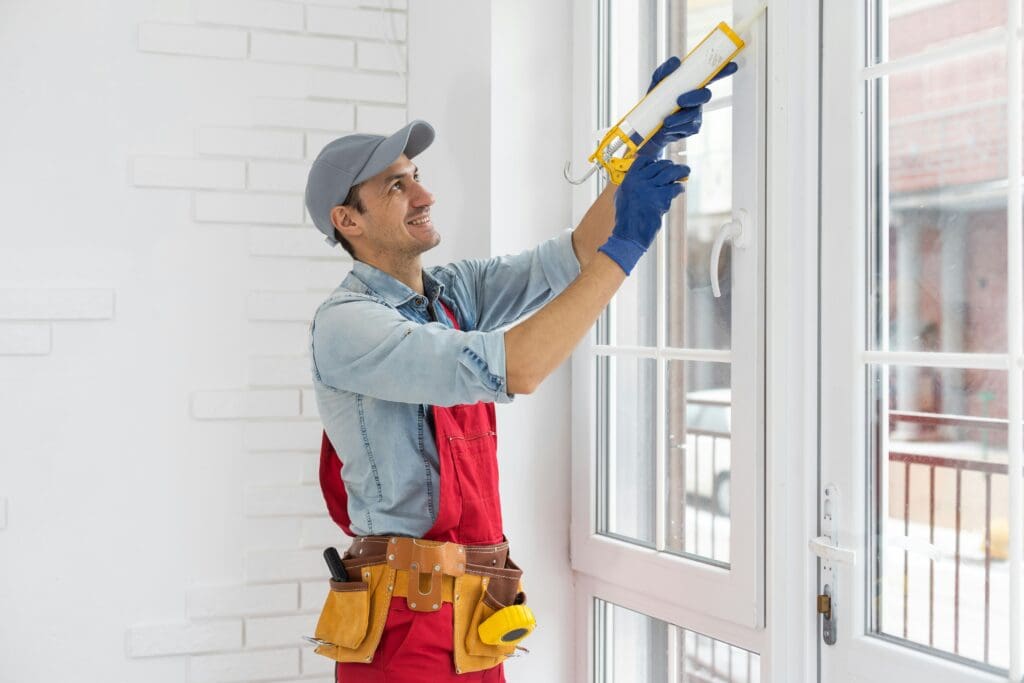How to Treat Rising Damp in an Old House

Estimated reading time 7 minutes
Damp in a home can be a horrible problem to encounter. Not only do you have the cosmetic effect that may drive your house value down, but there are potential health concerns that dampness can bring.
Rising damp is one such issue. Often found in older homes, it can be troublesome on many levels and is best treated as soon as possible. How you treat it may vary, and much depends on how old your house is.
What is rising damp?
Rising damp is an issue – it’s particularly prevalent in older homes but occasionally appears in newer homes, too. It happens where moisture comes up from the ground, travelling through the walls and leaving damp patches on them. In addition to the walls exhibiting stains, discoloration and damage, the floorboards and skirting boards around them may also show signs of deterioration.
Outside of the house, you may see a buildup of moss, staining and faltering brickwork.
As the name suggests, the damp does rise, but only to a point. You can expect to see evidence of rising damp reach up to about 1.5 metres up your wall. Should there be signs of damp higher than this, you may have more than one damp problem to contend with.
At times, you might also see what looks like salt on the internal walls. This is often an indicator that rising damp is prevalent.
What is an old house?
It is perhaps worth clarifying what an old house is. Some people classify a home built in the 1980s as old, but some people still see this timeframe as relatively new. The general consensus is that an old home is one built pre-1940. This seems quite a wide scope, especially as there are estimated to be approximately 4 million homes in the UK from the Victorian and Edwardian periods (1837-1915).
In this blog, we are sticking with the pre-1940 benchmark, and even though many of these will have been built significantly differently from one another, the concerns of rising damp remain among them all.
What will cause rising damp in an old home?
Rising damp occurs in an older house when moisture penetrates the property at its lowest level and gradually creeps up. Many buildings, even those built as far back as the Edwardian period, have what is known as a damp proof course or DPC installed. These are basically a barrier between the ground and the property. They are made of a non-absorbent or waterproof material and stop moisture from creeping into the walls. These are in place to stop rising damp, but occasionally, they fail.
In some cases, a DPC has never been installed. Homes from the Georgian era, for example, didn’t get built with a damp proof course, meaning it could be easy for damp to find a way up through the walls.
With no DPC or one that is damaged, rising damp quickly becomes a risk.
Signs of rising damp in an old home
Rising damp can make itself known in a variety of ways, some of which may look like other forms of damp, such as condensation or penetrating damp.
You should look out for:
- Dark patches on the walls that are damp to the touch
- Damp and musty smells in the home
- Discolouration of walls and plaster
- Crumbling plaster or brickwork
- Rotting timber on floorboards and skirting
- Tide marks along the walls up to 1.5m high
Outside the home, look for patches of moss growing up the wall or discolouration or crumbling of the brickwork.
Due to the possible confusion over the cause of the damp, it would always be advisable to seek help from an expert first. That way, they can detect the source of the problem and help you avoid spending money on repairs that won’t remedy the issue.
How can rising damp be treated in an older home?
Rising damp is prevalent either due to the DPC being non-existent or bridged. As a result, you’ll need to have a DPC repaired or installed. Depending on the age of the building, this may be easier said than done. A listed building, for example, may have restrictions on what can be done to it, as well as being built of materials that are not suitable for certain DPC treatments.
A professional inspection will be able to clarify this for you. Should your property be suitable for treatment for rising damp, you might be presented with any of the following options.
Damp proof course injection
A chemical is injected below ground level. It forms a barrier and then stops water from making its way into the home.
Waterproof membrane
A membrane is installed below ground level. Thanks to its waterproof nature, the moisture cannot pass through it.
Electro-osmosis
Metal rods are inserted into holes made in the wall. With an electric current, moisture is drawn out of the masonry.
Chemical injection
In some cases, an injection of specific chemicals can be made directly into the wall. This forms a barrier that stops the moisture from going any further.
You could also look at some DIY treatments for rising damp in an older home. However, these should only be attempted if you have sufficient experience of this type of work.
Seal external walls
If you have cracks in the walls on the outside of the house, sealing them may be a good place to start. This will prevent water from making its way in.
Invest in a dehumidifier
Should damp patches already be noticeable on the walls, you could use a dehumidifier to help pull moisture from the air. It could take some time to see results, but once the walls are dry, this should greatly improve the situation.
Use a sump pump
A sump pump will help pull away any excess water from underneath the house, which then pulls water away from within the walls.
How much does it cost to treat rising damp in an old house?
It can vary greatly. The cost of treating rising damp in an old house will depend on the methods you choose and how bad the problem is. Hiring a professional, for example, will cost more than doing it yourself, but the results are more likely to be beneficial.
Much also depends on how many treatments you may need. In some cases, you’ll have to tackle the rising damp in your old home with more than one method of treatment for it to be successful.
Some treatments cost just a few hundred pounds, but it is not uncommon to see more than £20,000 being spent in some cases.
How can I prevent rising damp from returning to an old home?
Whether you have had a treatment for rising damp carried out by a professional or done it yourself, it’s important to ensure it doesn’t return in the future. You can help to prevent a recurrence by:
Improving ventilation
If you improve the air circulation, you reduce the chances of air settling and moisture building up. This improved air flow will see the affected areas dry more quickly and reduce the risk for dampness appearing.
Install diversions for water
It’s important to ensure that rainwater and water from gutters are both diverted away from the foundations of your home. Allowing this water to make its way towards the foundations greatly increases the likelihood of damp developing in your home.
Reseal any cracks
Even though the treatment should help reduce any chance of rising damp, you’ll want to eliminate all possibilities. Seal cracks in basements and foundations with a waterproof sealant.
As you have seen, it can be expensive trying to tackle a rising damp problem, and if you don’t have the cash to hand, it could be a problem that escalates and ends up costing even more to repair further down the line. An alternative solution is to speak to our team at Bettermove. We make it possible to sell an unsellable house, such as the type of homes that high street estate agents tend to ignore. This allows you to sell your home fast, without the worry of a chain break or a complicated and drawn-out sales process.



